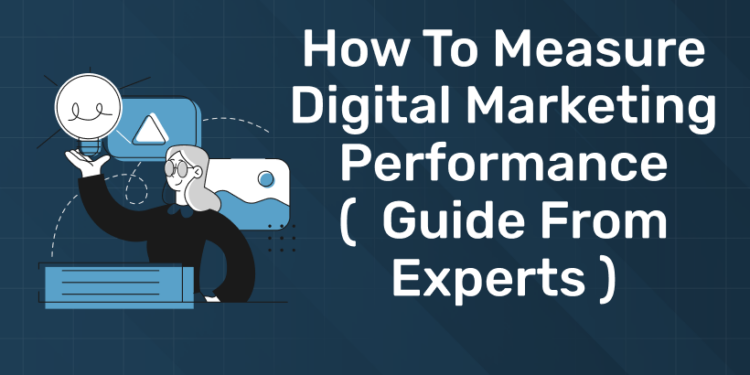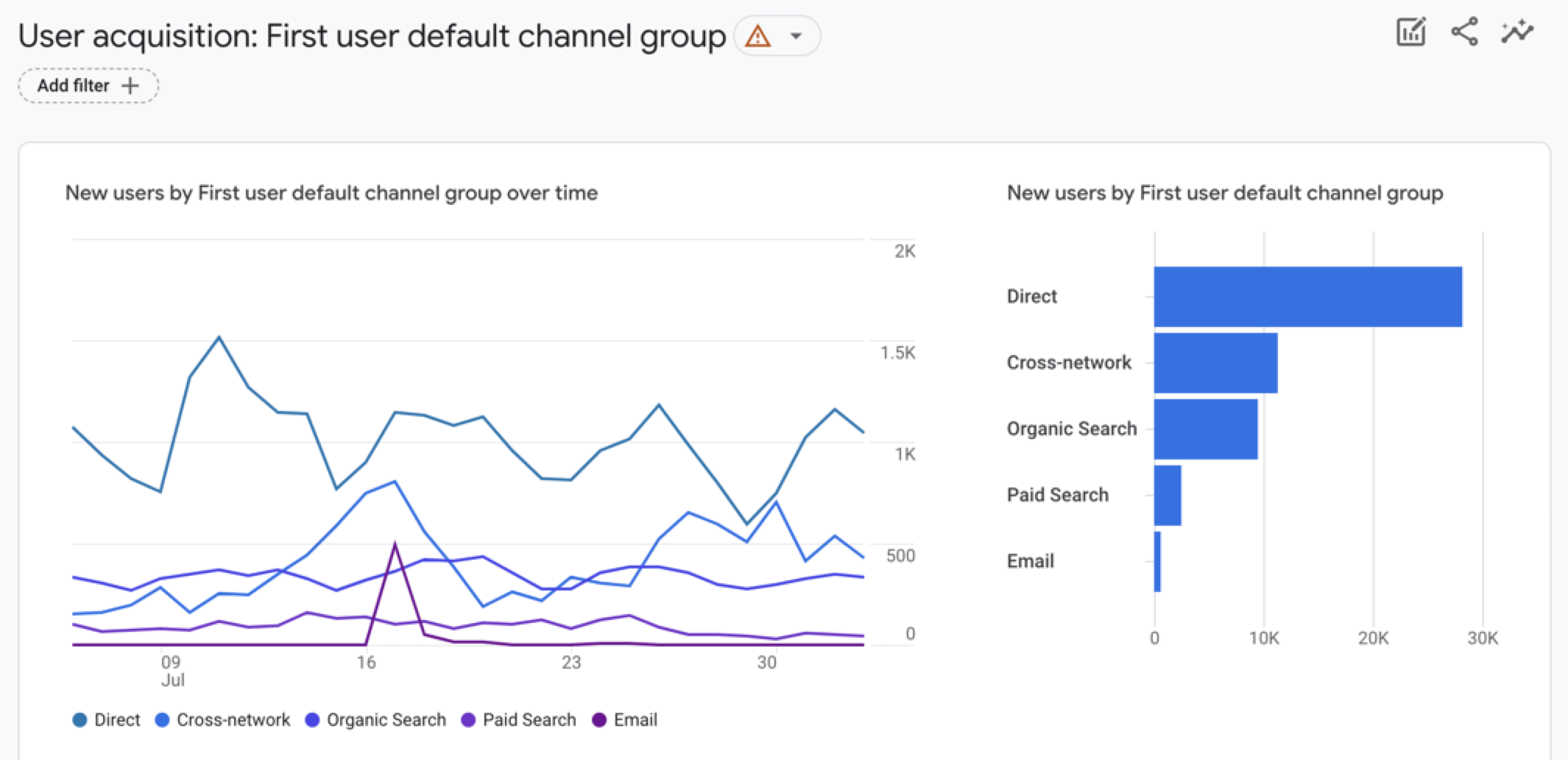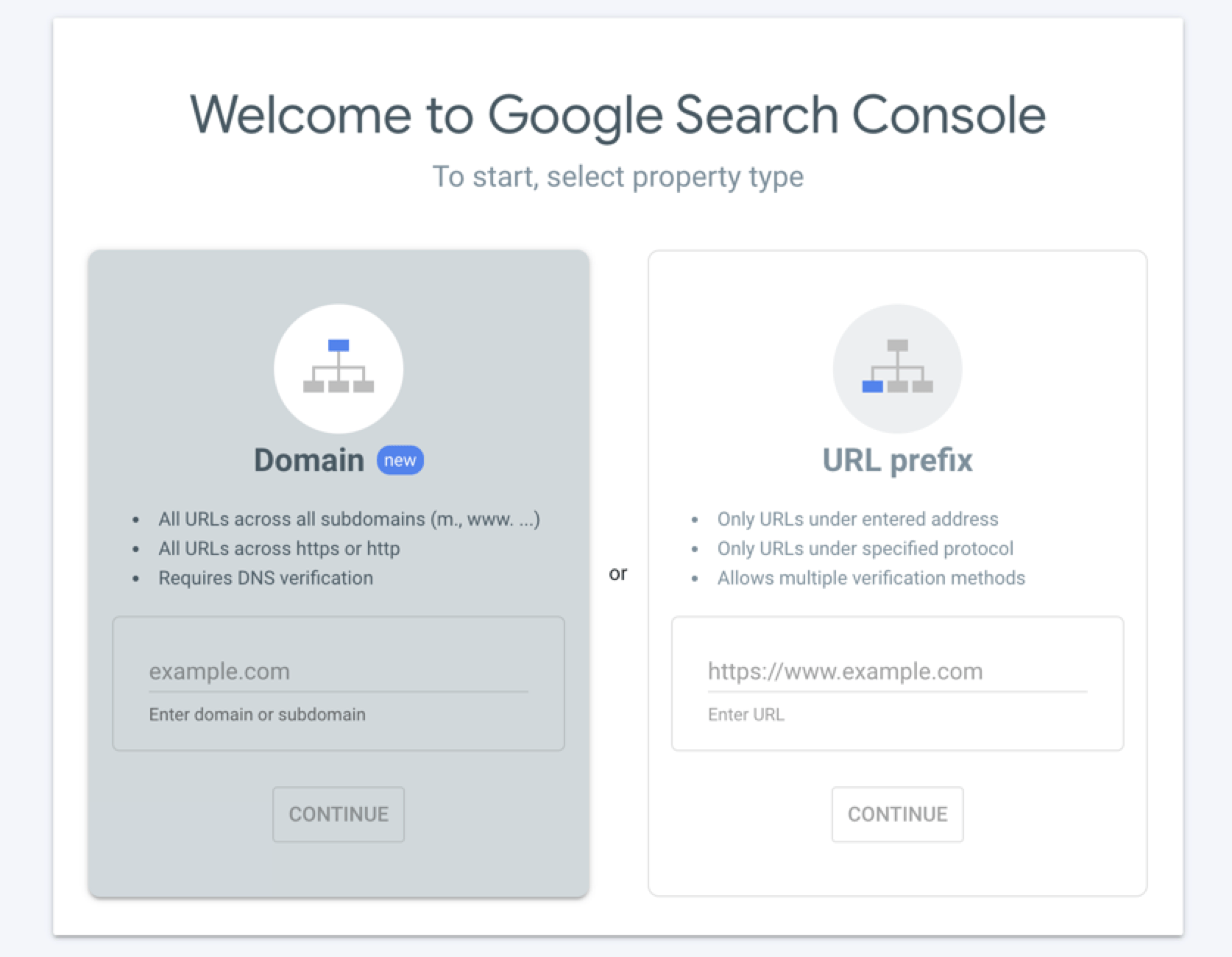Table of Contents
In today’s digital age, having a clearly defined digital marketing strategy is essential for business success. However, developing a strategy is only the first step. To truly understand digital marketing performance and the effectiveness of your efforts, you need to measure and evaluate your results. This is where a solid marketing measurement plan becomes important.
A marketing measurement plan identifies the key metrics and data points you need to evaluate the success of your digital marketing framework. It provides a roadmap for collecting and analyzing relevant data to gain valuable insights into consumer behavior, campaign effectiveness and overall ROI.
Understanding your digital marketing performance will help you invest in the best strategies. Take the guesswork out of measuring your marketing performance with metrics and expert tips.
Learn the fundamentals of digital marketing! Join the Classes today!
How to Measure Digital Marketing Performance
What to do to measure your marketing effectively The following tips will help you get the most out of your approach:
1. Set goals for your marketing performance
Before you can measure your marketing performance, you need to set goals to accurately measure your progress. Your goals should be SMART goals, such as:
Specific: Set your goals in sufficient detail.
Measurable: Contains specific numbers that can be measured.
Achievable: Set goals that are reasonably achievable.
Relevance: Make sure your goals support your overall business goals.
Timely: Set deadlines to achieve your goals.
For example, “acquire new leads” is not a SMART goal. A SMART version of this goal is: “Increase the number of leads I generate per month to 100 by the end of the quarter.”
Depending on the nature of the business and broader goals, you may want to achieve different goals. Good goals to set include incremental goals such as:
Brand awareness: the level of consumer awareness of the brand and its features.
Number of leads: The number of potential customers who have expressed interest in your product, service or company.
Sales: The number of closed sales or the total revenue from those sales.
Net Income: The amount of revenue a company receives minus its expenses.
Customer Acquisition: Number of new customers acquired.
Engagement: The amount of customer interaction with your brand and the quality of that interaction.
Customer Loyalty: How willing are customers to do business with your company?
2. Choose data-tracking software for marketing performance
One of the advantages of digital marketing is that it is much easier to measure marketing performance than traditional marketing. With traditional marketing media like billboards and magazine ads, you can’t easily track who saw your ad and whether it helped your cause or not. particle for direct object
However, since your digital marketing efforts are Internet-based, you have access to detailed and accurate information about how your campaigns are performing. Here are some tools you can use to measure the performance of your marketing campaigns.
Google Analytics 4
GA4 is one of the most powerful marketing performance measurement tools out there, and best of all, it’s free. Companies must register for GA even if they use other tools.
Once you’ve added the necessary JavaScript tracking code to your site, GA4 will track how users interact with your site and ads. The main types of interactions that GA44 tracks are:
Hit event: Whenever a user performs a specific action on a page, such as clicking a button.
E-commerce purchases: Every time a visitor buys a product.
Attract traffic: How customers find and visit your website. particle for direct object
GA4 allows you to set marketing goals such as the number of users who visit a specific page or the number of visitors who take a specific action. GA4 gives you access to reports on your site’s performance and goals. Here is a sample traffic acquisition report.
Google Search Console
.Another useful tool from Google is the Google Search Console (GSC). This free tool helps you track your site’s SEO performance.
GSC allows you to see if Google has crawled and indexed your site. This is necessary to display in search results. You can also see data about your site’s search performance, including:
- The total site visits and clicks
- Average site click rate
- Average site position in search results
- Which search results include your site
GSC also provides information about other factors that affect search rankings, such as your site’s mobile compatibility, security issues, and other sites linking to your site.
MarketingCloudFX
MarketingCloudFX is a digital marketing platform that allows you to manage your marketing campaigns. It offers a number of features, including tracking how potential customers reach your site, measuring the results of your email campaigns, and monitoring search engine performance.
MCFX allows you to take data from all your marketing channels and turn it into real-time reports. Using this data, you can make better decisions about how to proceed with your marketing campaigns. particle for direct object
Special features include:
- Storage of customer information
- Call tracking
- Integration with other marketing software
- Email automation features
3. Determine your key marketing performance indicators (KPIs)
Deciding which metrics to track are important to maintain performance. KPIs show the health and progress of your campaign. These metrics allow you to adjust your campaigns and avoid wasting time and resources.
The criteria you follow will depend on your approach. For example, impressions may become more important if you prioritize social media. However, if your main goal is to improve SEO, the impact may not matter much.
4. Create a schedule for tracking marketing performance
Once you have your goals, metrics, and marketing tools ready, it’s time to track your metrics. Evaluate your progress regularly and adjust your strategy as needed. In order to keep track of your progress, you need to create a plan to monitor your campaigns.
Some projects, such as pay-per-click advertising campaigns, only track performance during the campaign period.
Other efforts, such as SEO, require ongoing follow-up. Track your campaign metrics and record your progress so you can continuously improve your strategy. Over time, this process will help your company grow and achieve your overall business goals.
5.Metrics to track to measure marketing performance
So, what KPIs should you track, below are five different options for tracking your campaigns.
- Conversion rate
- Cost per lead (CPL)
- Customer lifetime value (CLV)
- Return on investment (ROI)
- Mobile leads, traffic, and conversion rates
1. Conversion rate
A conversion rate is the percentage of customers who take a specific action you want them to take, such as making a purchase or signing up for your email list.
2. Cost per lead (CPL)
CPL measures the cost of acquiring a new lead. To calculate these metrics, you need to factor in the cost of advertising, software, and other elements that help generate leads.
3. Customer lifetime value (CLV)
CLV shows how valuable a customer is to a company. First, multiply the average purchase amount by the average purchase frequency to get the customer value. Then, multiply the customer value by the average time the customer spends with your company to find the lifetime value of the customer.
4. Return on investment (ROI)
ROI shows how much you earn compared to your investment. It tells you whether your investment has been profitable or not. ROI can be calculated by dividing the net profit by the total investment and multiplying by 100.
5. Mobile leads, traffic, and conversion rates
Mobile metrics can show the health of your marketing. If you can’t optimize for mobile, you’re missing out on an important collection. More than 40% of online transactions are done on mobile devices.
You can use data tracking software to check cell phone performance and issues. From there, you can look for issues like bounce rate or lost conversions to see where you’re falling short.
Marketing performance measurement includes the effectiveness and return on investment of marketing campaigns. The benefits of regularly reviewing your marketing performance include:
Sign up to learn the basics of performance marketing in digital marketing!
Why Measure Digital Marketing Performance
1: What is the primary goal of SEO (Search Engine Optimization)?
Improved ROI
Measuring your marketing campaigns shows which aspects of your campaigns are working well and which need attention, allowing you to determine the best marketing channels to achieve your goals.
Increasing transparency and accountability
To properly measure the effectiveness of your campaign, you need to set clear goals. By doing this, you need to give your marketing team clarity and accountability about what you want to accomplish and enable them to work together to achieve those goals.
Data-driven decision making
Marketing reports contain a lot of data for your business. From tracking website usage to determining which ads users interact with the most, this data helps guide your team in making successful decisions.
Excellent customer experience
Use your marketing insights to understand how your audience feels about your product, service or company. You can then adjust your efforts in new ways to best support them and increase customer satisfaction.
Defining Digital Marketing Performance with KPI
1. Cost per lead
This metric shows the individual cost of each acquired lead. Therefore, you can understand how much money in your budget is spent on acquiring new contacts. The goal is to evaluate whether the amount invested is commensurate with the effort it takes to generate leads. You should evaluate the time and resources spent on the strategy in the specified time frame. At this point, you should invest in parallel with the number of leads you generate.
2. Cost per conversion
They use this KPI to understand how much money we are investing in converting prospects into customers. This metric is very important because it helps you measure the quality of your mid-funnel media strategy. The higher the conversion rate, the better.
Track the number of leads received over a period of time in Customer Relationship Management (CRM). Then consider the same time frame and measure the number of conversions made. During this period, evaluate the cost and effort spent to achieve the obtained conversions.
You need to divide the monthly cost of a particular lead source by the number of conversions. This way you will know how much it costs for each new customer.
3. Net promoter score
This KPI is set to show the level of customer satisfaction with your business. To do this, we ask the following questions in our survey: How likely are you to recommend the product (or service) to a friend?
Depending on the rank you choose, you will be categorized into three groups:
- Those who voted 9 to 10 are brand enthusiasts.
- People who rated 7 out of 8 are satisfied but less enthusiastic and want better products, services and benefits.
- People who rate from 0 to 6 are unhappy customers who may have bad things to say about your brand.
It is calculated by subtracting the lowest level (0-6) from the highest level (9-10) to obtain the average score of consumer satisfaction with the company.
4. Monthly website traffic
This KPI is a basic but simple metric that tells you how much traffic your website is getting each month.
This information can be found in Google Analytics, including details:
- visitors in pages;
- visitors in product categories;
- visitors by price filters;
- visitors in landing pages;
- visitors on the blog (when it’s integrated into the institutional website).
5. Visits per channel
Your inbound strategy is driven by traffic. After all, the goal is to attract consumers. That is why the number of views of each channel is very important. Visits per channel tells you through which channel this traffic was generated. This lets you know if your visitors came through social media, organic search, or Google Ads. This measurement is done directly in Analytics and these details are displayed in the metrics.
6. Average time on page
Average page time is one of the ranking factors considered by Google’s algorithm. When users spend less time on a page, Google can tell if the page isn’t providing all the information the reader is looking for.
Analytics allows you to track these KPIs and metrics individually on pages such as:
- homepage;
- product category;
- blog posts;
- landing pages.
Tip: The best way to improve your average time on page is to improve the quality of your page content. This can be achieved by outsourcing content creation to professional writers and content strategists.
7. CTAs conversion rate
A call to action (CTA) typically creates a conversion when someone purchases an item, downloads content, or visits a page. The KPI associated with this activity measures the conversion rate achieved through your CTAs.
CTA conversion rate is another KPI that Analytics provides accurately. You should set up which buttons to track in advance and access the indicators later to see the conversion rate of your CTAs.
8. Traffic from organic search
This is a simple KPI. This allows you to visualize how much traffic your site is getting from regular Google searches.
It is a free traffic source and as a result is a perfect fit with the SEO parameters required by Google. This metric can also be found in Analytics.
Digital marketing KPIs are essential for monitoring campaigns and defining strategies. Without these, it will be impossible to measure the results of your investments and efforts, and your company’s marketing plans will be at risk.
Tools And Resources For Digital Marketing Performance
Here, we’ve compiled a comprehensive list of digital marketing tools that will help you no matter what your goals are, including free and freemium tools for those on a budget.
Whether you’re managing customer relationships, generating leads, or discovering new marketing opportunities, this list serves as the foundation of a powerful marketing stack.
Please check the categories below first.
- Social media marketing tools
- Email marketing tools
- SEO (search engine optimization) tools
- Conversion optimization tools
- Lead enrichment tools
- Landing page and lead capture tools
- Graphic creation tools
Social media marketing tools
We have seen firsthand how social media has become the preferred marketing channel for businesses today.
A great place to nurture leads and build business relationships, social is great for gathering valuable data about what your customers want.
“Manually” managing every social media move can lead to burnout. Instead, consider how you can use specialized software to publish more meaningful content and use social media to achieve your larger business goals.
Email marketing tools
Email is perhaps the most proven and scalable marketing channel available to modern businesses. That’s why email solutions have become one of the main Internet marketing software for businesses large and small.
From building lists and improving deliverability to creating great offer campaigns, let’s take a look at tools that can analyze your customer data and automate most of your marketing efforts.
SEO (search engine optimization) tools
As the digital space becomes more competitive, anything businesses can do to increase their search presence is a positive. SEO can be difficult, especially for startups, but there are many online marketing tools that can help you discover search opportunities and optimize your search engine efforts.
Conversion optimization tools
When it comes to getting people to convert on the spot, small changes can make a big difference.
Simply changing the color of the CTA button can be the difference between signing up for a free trial and being rejected. Among the digital marketing tools in your toolbox, conversion optimization software can help you find easy opportunities to increase your revenue.
Lead enrichment tools
It is well established that most website visitors do not provide enough data after leaving the site.
Fortunately, there are business intelligence tools that can help you better understand your prospects and highlight important information for contacting those who have expressed interest. Especially powerful for B2B marketing, lead enrichment tools provide a more comprehensive view of your traffic to increase lead generation and outbound marketing incentives.
Landing page and lead capture tools
Because our attention spans are shrinking, it’s important to make a conscious effort to attract visitors once they land on your site. A marketing platform that focuses on lead generation ensures that traffic is not wasted and visitors are more likely to take action. If you do it right, you’ll end up with more leads and more conversions.
Graphic creation tools
Visuals are the foundation of social marketing and branding in general. If you don’t have the budget to hire a designer or you have a DIY business, digital marketing tools are the best option for creating eye-catching visuals.
That said, there are other graphic tools you should consider to keep your creations from getting stale.
Achieve exceptional results with performance marketing techniques! Enroll Here!













